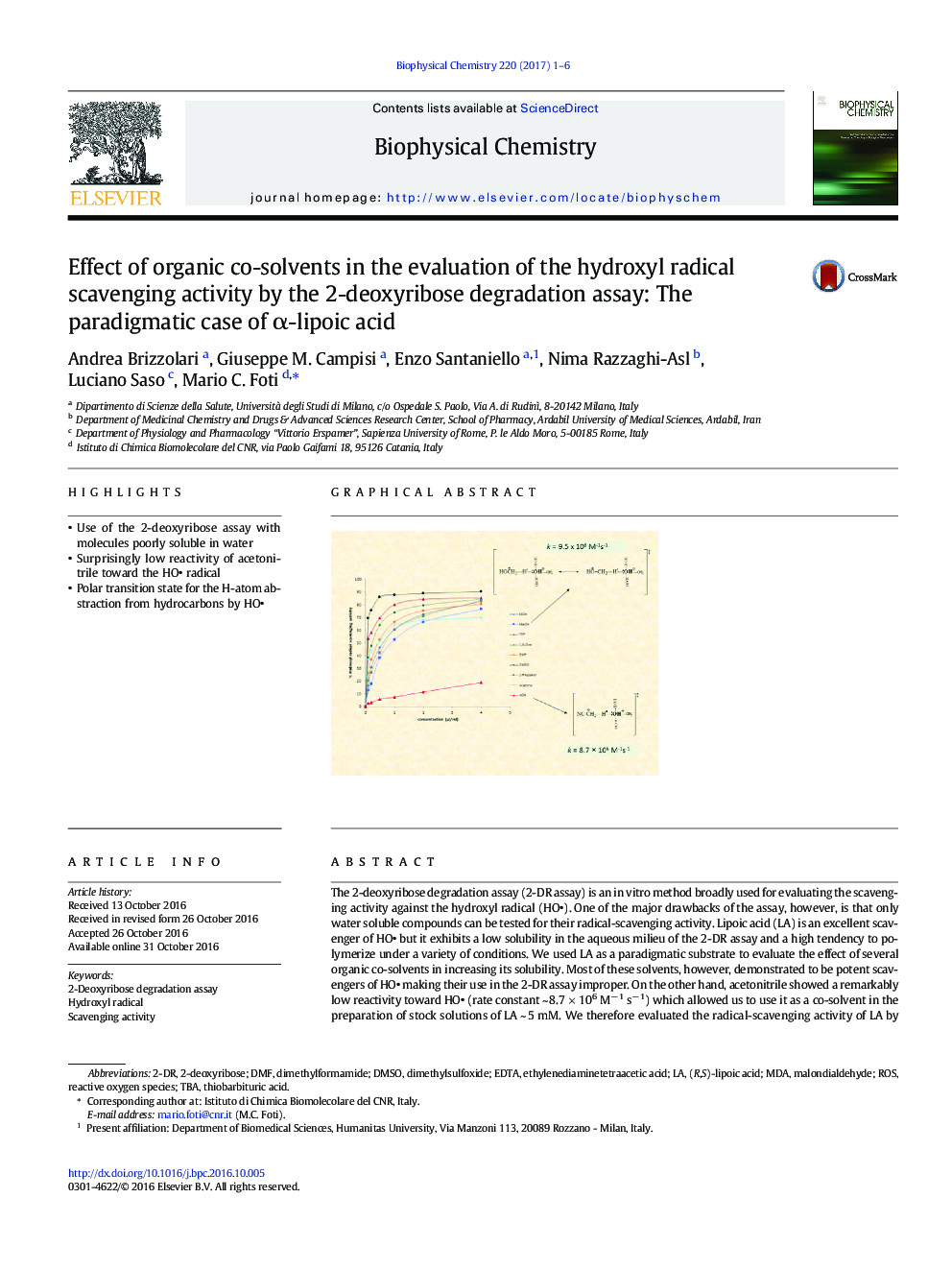| Article ID | Journal | Published Year | Pages | File Type |
|---|---|---|---|---|
| 5370678 | Biophysical Chemistry | 2017 | 6 Pages |
â¢Use of the 2-deoxyribose assay with molecules poorly soluble in waterâ¢Surprisingly low reactivity of acetonitrile toward the HO radicalâ¢Polar transition state for the H-atom abstraction from hydrocarbons by HO
The 2-deoxyribose degradation assay (2-DR assay) is an in vitro method broadly used for evaluating the scavenging activity against the hydroxyl radical (HO). One of the major drawbacks of the assay, however, is that only water soluble compounds can be tested for their radical-scavenging activity. Lipoic acid (LA) is an excellent scavenger of HO but it exhibits a low solubility in the aqueous milieu of the 2-DR assay and a high tendency to polymerize under a variety of conditions. We used LA as a paradigmatic substrate to evaluate the effect of several organic co-solvents in increasing its solubility. Most of these solvents, however, demonstrated to be potent scavengers of HO making their use in the 2-DR assay improper. On the other hand, acetonitrile showed a remarkably low reactivity toward HO (rate constant ~ 8.7 Ã 106 Mâ 1 sâ 1) which allowed us to use it as a co-solvent in the preparation of stock solutions of LA ~ 5 mM. We therefore evaluated the radical-scavenging activity of LA by the 2-DR assay in a relatively large range of concentrations, 1-200 μM. We found that the rate constant for LA + HO is diffusion-controlled (~ 1 Ã 1010 Mâ 1 sâ 1 in water at 25 °C) and uninfluenced by the presence of small quantities of acetonitrile. Therefore, the use of acetonitrile in the 2-DR assay does not interfere with the test and may increase the solubility of the radical scavengers.
Graphical abstractDownload full-size image
